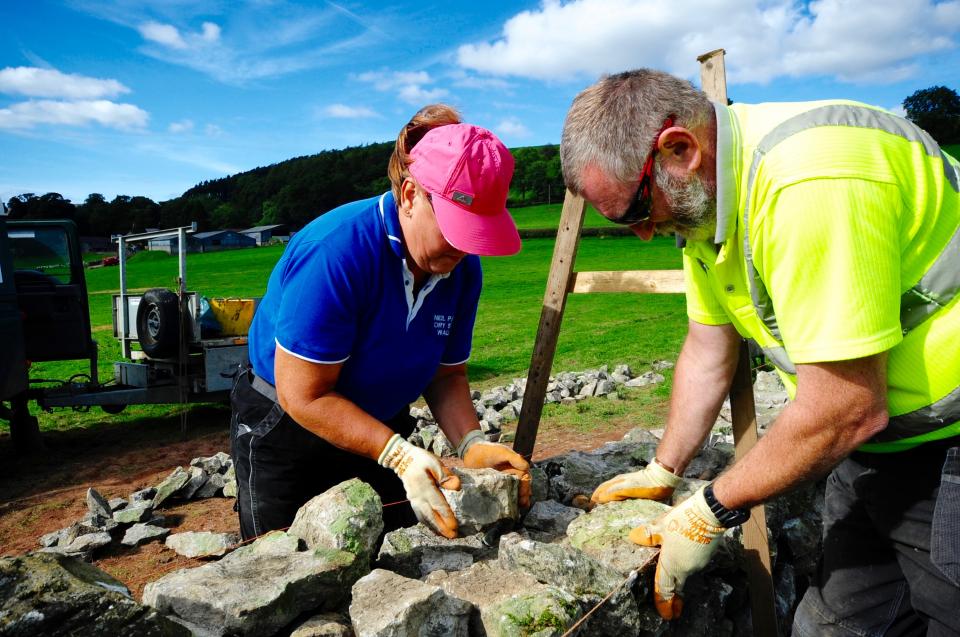
Interview by Mark Sutcliffe.
After a successful army career, Neil Paton and wife Sheila moved into Bowland from Preston and started a dry stone walling business together more than a decade ago.
Occupation: Dry stone wallers and hedge layers
Home town/village: Whitendale, near Dunsop Bridge
How long have you lived/worked in the Forest of Bowland? Over 12 years.
How did you get into dry stone walling?
Neil: I was working at a training company in Preston after leaving the Army and they made two thirds of the staff redundant. Competing with my former workmates for the few jobs that remained didn’t seem right to me, so I took the redundancy package and looked for something new to do.
Sheila: We had been coming up to the Hodder Valley for a number of years because I have family here and we used to visit on quite a regular basis.
Neil: Over the years, I developed a fascination with dry stone walls, so when people asked me what I was going to do after I took redundancy, I told them I was going to retrain as a dry stone waller.
Sheila: My brother-in-law, John Whitaker, had some sections that needed repairing so he showed Neil how to do the basics and pointed out a few more gaps that needed fixing and that was the start of it.
How does the job change throughout the seasons?
Neil: It’s a wonderful job in the spring and summer, but once winter sets in, you really have to pick your days. I can lose up to six weeks of work in a bad winter, because snow, ice and rain can make the job almost impossible.
Sheila: My favourite time of year is spring, when everything is coming back to life again. When the sun starts to warm things up suddenly you’re surrounded by lambs bleating. It’s a very special time of year.
Neil: But I love the autumn the best. The trees in the valleys as their leaves turn are spectacular and you can be working high up on a fellside early in the morning with thick ribbons of mist lying above the river in the valley floor and there’s that autumnal quiet as the mist seems to absorb all the sound.
What are the perks of working outdoors?
Neil: We are so lucky to live in Bowland – the Hodder Valley is so rich in wildlife and we’ll quite often see deer, weasels, stoats, birds of all sorts. And the walls themselves are home to all sorts of animals: voles, field mice, lizards and even toads down in the mud at the bottom of the foundations.
How long will a well-built dry stone wall last?
Neil: If it’s built properly, you should get a good hundred years out of it. But I suspect some of the walls in Bowland have been around for much longer. They would have originally been built following the Acts of Enclosure in the 18th and 19th centuries and in those days, professional teams of wallers would travel round the area putting walls in even the most challenging of terrain.
Where’s your favourite part of Bowland?
Neil: I can’t tell you exactly where my favourite place is, but in the upper Brennand Valley, there’s a very old hawthorn tree next to a bend in the river and that’s my special place. I call it my thinking tree.
Sheila: There are amazing views around every corner and over every hill and the fact that it’s at the Centre of the Kingdom makes it extra special. It’s just a fantastic place to live – it's our little piece of heaven.

